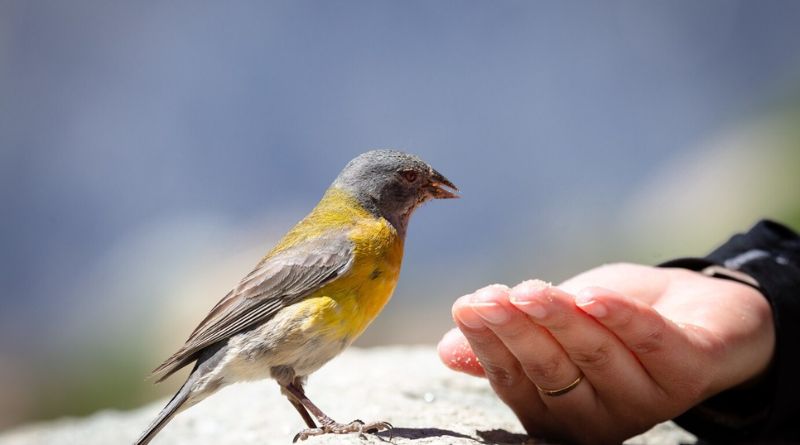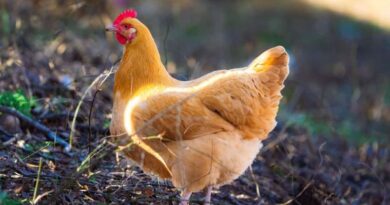9 Fun Facts About Birds You Must Know
Fun Facts About Birds – Birds, with their captivating diversity and remarkable adaptations, occupy a unique and essential role in our ecosystems. From the awe-inspiring flights of migratory species to the intricacies of their intelligence and communication, these feathered creatures never fail to amaze.
This exploration into the world of birds unveils their fascinating physical characteristics, showcasing the purpose and versatility of feathers and the varied adaptations of beaks. The section on flying feats unravels the mysteries of migration and the elaborate courtship displays that define avian romance.
Intelligence and communication delve into the complex vocalizations and problem-solving abilities, while record-breaking birds highlight the extremes in size, lifespan, and speed. Nests and nesting behaviors illuminate the creativity of avian architecture, and a glimpse into cultural significance and fun trivia rounds out the delightful journey through the captivating realm of birds.
Fun Facts About Birds
Feathers Serve Various Purposes

Birds’ feathers serve a myriad of purposes beyond flight. While crucial for aerial locomotion, feathers also provide insulation, aiding in temperature regulation. They contribute to camouflage, enhancing a bird’s ability to blend into its environment.
Moreover, feathers play a pivotal role in courtship displays, acting as vibrant indicators of health and genetic fitness. Some birds use feathers creatively in nest construction, showcasing their adaptability.
The intricate design and multifunctionality of feathers underscore their significance in the survival, communication, and reproduction strategies of avian species.
Hummingbirds are Amazing Flyers
Hummingbirds are unparalleled aerial acrobats. They are the only birds capable of sustained hovering, achieved through rapid wing beats that can exceed 80 times per second. Their unique ball-and-socket shoulder joints allow for intricate maneuvers, including flying backward and upside down.
Remarkably, hummingbirds can cover large distances during migration, despite their diminutive size. Their incredible agility is attributed to specialized muscles and a keen sense of spatial awareness.
With a metabolism that rivals the fastest among birds, hummingbirds display an extraordinary fusion of physiological adaptations that enable them to thrive in diverse environments, showcasing their prowess as nature’s high-speed aviators.
Also, Read – Top Snake Documentaries to Watch
Penguins Can’t Fly, but They’re Great Swimmers
Despite their inability to fly, penguins are exceptional swimmers, mastering the art of aquatic locomotion. Their wings, adapted into flippers, propel them through the water with remarkable speed and agility. Penguins exhibit a streamlined body shape that minimizes drag, enabling efficient underwater navigation.
Some species can reach impressive speeds of up to 22 mph (35 km/h). Well-adapted to their marine lifestyle, penguins use their wings for steering while swimming.
Their proficiency in the water allows them to pursue and capture prey with precision. While flight may elude them, penguins have evolved into expert divers, showcasing their prowess in the oceanic realm.
Owls Have Specialized Hearing
Owls possess extraordinary auditory adaptations that set them apart in the avian world. Their facial discs, comprised of specialized feathers, form a sound funnel directing sounds to their ears. Remarkably, asymmetrical ear placements allow for precise sound localization in three dimensions.
This unique setup enhances their ability to detect and pinpoint the faintest rustles of prey, even in complete darkness. Additionally, the arrangement of feathers around their ears serves to eliminate unnecessary sounds, ensuring a focused auditory experience.
Owls’ unparalleled hearing capabilities make them stealthy nocturnal hunters, showcasing an evolutionary marvel that aids their survival in the silent realm of the night.
Crows are Highly Intelligent

Crows are among the most intelligent birds, demonstrating problem-solving skills and advanced cognitive abilities. They use tools, create and use complex strategies to obtain food, and have even been observed using traffic to crack nuts.
Notably, crows can recognize human faces and remember specific individuals, responding to them with distinct calls. Their brain-to-body ratio is comparable to that of great apes, signifying their remarkable intelligence.
Studies suggest that crows can plan for the future, display self-awareness, and learn from observing others. This high level of cognitive sophistication positions crows as adaptable and resourceful creatures in the animal kingdom.
Also, Read – Biggest State Parks in North Carolina
Albatross Have Impressive Wingspans
The wandering albatross boasts one of the most impressive wingspans in the bird kingdom, reaching up to 11 feet (3.4 meters). This remarkable wingspan allows them to cover vast distances over the open ocean with minimal effort.
Albatrosses are masters of dynamic soaring, a technique where they use wind gradients near the ocean’s surface to gain lift, enabling them to traverse thousands of miles in search of food.
The large wings not only facilitate efficient gliding but also contribute to their distinctive, majestic flight patterns. The albatross’s extraordinary wingspan reflects its adaptation to a life spent predominantly in the expansive and challenging marine environment.
Migratory Marvels
Many bird species are migratory marvels, undertaking incredible journeys across vast distances. The Arctic Tern, for instance, embarks on an annual migration from its Arctic breeding grounds to the Antarctic and back, covering a round-trip distance of about 44,000 miles (71,000 km).
Migration serves various purposes, including accessing seasonal resources, avoiding harsh weather, and ensuring successful breeding. Birds navigate these epic journeys using a combination of celestial cues, landmarks, and Earth’s magnetic field.
The precision and endurance displayed during migrations showcase the remarkable adaptability and navigational skills of these avian travelers, contributing to the ecological balance of diverse habitats along their migratory routes.
Lyrebirds are Masters of Mimicry
Lyrebirds, native to Australia, are unparalleled masters of mimicry. Renowned for their ability to imitate an array of natural and artificial sounds, they can replicate chainsaws, camera shutters, and other bird species with remarkable accuracy.
The superb lyrebird, in particular, showcases elaborate tail feathers during courtship displays, enhancing its mimicry with theatrical flair. These displays not only attract mates but also highlight the lyrebird’s exceptional vocal repertoire.
This mimicry serves various purposes, from communication to territorial defense. The lyrebird’s prowess in imitating sounds reflects an evolutionary adaptation that aids in survival, communication, and reproduction within the diverse ecosystems they inhabit.
The Kiwi is Nocturnal and Flightless

The kiwi, native to New Zealand, stands out as a unique bird with distinctive characteristics. Despite being flightless, the kiwi has evolved a keen sense of smell, crucial for locating its invertebrate prey in the forest undergrowth.
Another intriguing trait is its nocturnal lifestyle, allowing it to forage for food under the cover of darkness and avoid daytime predators. With a small, compact body and vestigial wings, the kiwi lays one of the largest eggs in proportion to its size among all bird species.
These adaptations reflect the kiwi’s specialized evolution, optimizing its survival in the specific ecological niches of New Zealand’s forests.
Conclusion
In conclusion, the fascinating world of birds is filled with captivating facts that highlight their incredible diversity and adaptability. From the acrobatic maneuvers of hummingbirds to the intellectual prowess of parrots, birds exhibit remarkable behaviors. Their ability to navigate vast distances during migration, the complexity of their songs, and the ingenious use of tools showcase the depth of avian intelligence.
Additionally, the remarkable diversity in sizes, colors, and habitats among birds emphasizes the vastness of the avian kingdom. Overall, these fun facts not only entertain but also underscore the importance of preserving and appreciating the rich tapestry of birdlife in our ecosystems.
FAQs
Hummingbirds achieve their remarkable hovering ability by rapidly flapping their wings in a figure-eight pattern, allowing them to stay stationary while feeding on nectar.
Some birds, like magpies and pigeons, have shown the ability to recognize themselves in mirrors, indicating a level of self-awareness.
Birds use songs for various purposes, including attracting mates, establishing territory, and communicating with other birds.




